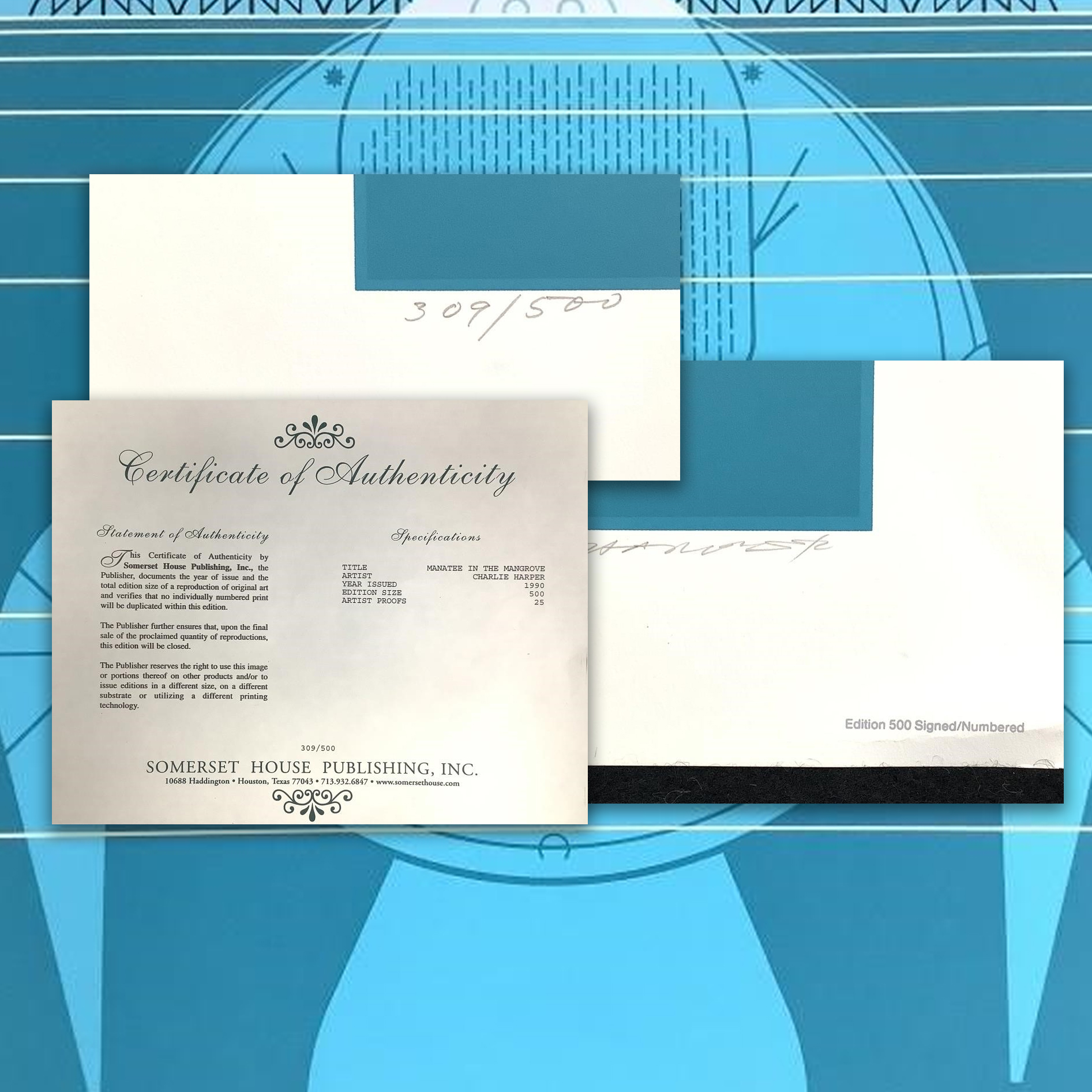As the Fine Art Specialist at Estate & Downsizing Specialists some of my favorite projects involve prints and printmaking, and I am often asked “What’s the difference between an original print and a reproduction?” Great question! Let’s start with a simple definition of an original print:
A print is a work of graphic art that has been conceived by the artist as an original work of art, rather than a copy of a work created in another medium.
Original prints are made by artists on a surface (called the matrix) such as wood block, metal plate, or stone. Ink is applied to the matrix, or sequentially when using multiple matrices, and the image is transferred to paper or another material by the application of pressure, creating an impression, or print. Prints can be further classified by the type of matrix used. The three main types are:
• Relief Prints, where ink is applied to the surface of the matrix (woodcuts, linocuts, rubber stamps, even potato prints).
• Intaglio Prints, where ink is applied below the surface (engravings, drypoints, etchings, aquatints, mezzotints).
• Planographic Prints, where ink lies on the plane of the paper (lithographs, screenprints/serigraphs, pochoir).
Simply put, an original print is made by transferring an image from an artist-created printmaking matrix onto paper or another support. But how does this differ from images that are photo-mechanically printed? Generally, it comes down to the artist directly producing the master image on the matrix, printing or supervising the printing of the edition, and approving and/or signing the resulting impressions. The significant distinction is between the work being produced or reproduced.
An original print is not a copy of anything. Although created in multiples, each piece is considered an original work of art because the artist conceived and executed it in that medium. A ‘print’ that reproduces an existing image (such as a painting), is not normally considered an original work of art. Commercial mass-production printing, no matter how well done, creates reproductions of watercolors, oil or acrylic paintings, drawings or photographs. If a ‘print’ looks like a watercolor or oil painting it is likely a printed facsimile – a reproduction – of original art. Prints commonly called Limited Editions are created through reproductive color photographic processes. Giclees fall into this category as well, since an existing work of art is photographed and reproduced using laser printing. A magnifying glass can help reveal the dot pattern common to many types of reproductions.
A signature does not always mean that a print is original – signatures can be printed as part of the reproduction process, and both reproductions and original prints can be pencil signed and numbered by the artist. A pencil signature on a reproduction simply verifies that it was touched by the artist, in the same way that an author’s signature in a book verifies that the copy passed through the author’s hands.
Want to start or add to your own print collection? Visit our auction site regularly to bid on treasures new and old. Original prints are regularly on offer in wide range of prices, but if you’re moved to instead purchase a reproduction of a painting that you love, do it! Your understanding of reproductions versus original prints can help you to make informed collecting decisions.
EDS Fine Auctions offers services to help you evaluate or sell your original works of art and fine prints. For information about Estate & Downsizing Specialist’s art evaluation and appraisal services, contact Fine Art Specialist Colleen McKenna at [email protected]. If you’re interested in consigning or selling your collections, reach out to Auction Manager Ren Campbell at [email protected].




